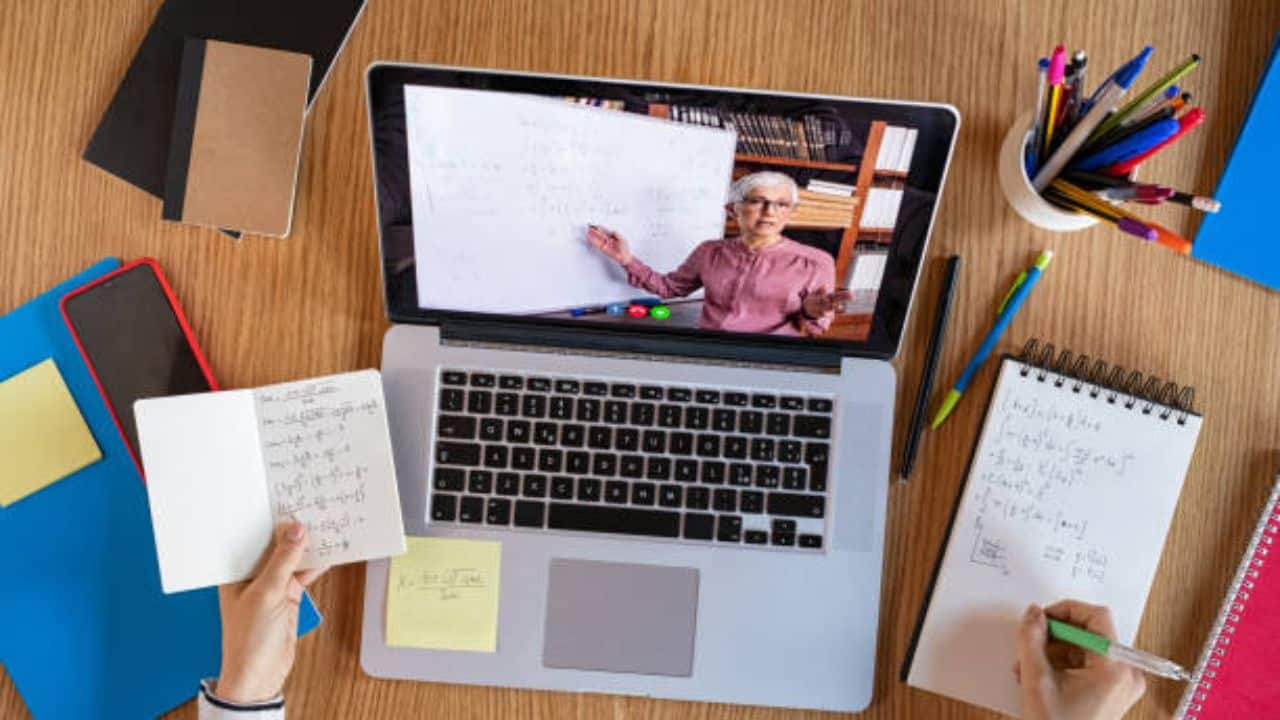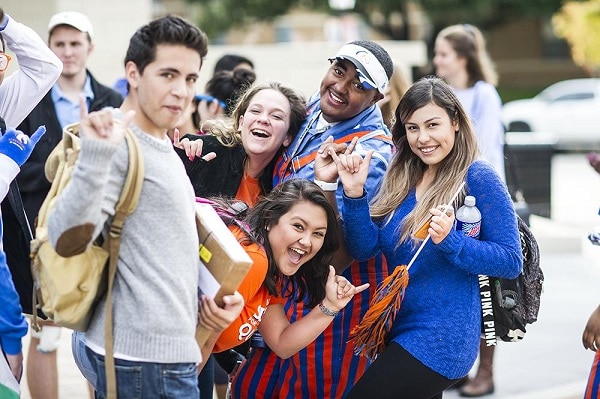Education is, by all means, one of the necessities of life for every child, but what happens when a child is blind or visually impaired? For a long time, it was feared that individuals with such impairments might have difficulty getting an education. Now, different countries are beginning to make provisions for everyone. We shall discuss the best schools for the blind in the world.
If you know someone in this category, you could help them go to school by enrolling them in one of the schools listed in this article.
For the benefit of the development of the visually impaired, these schools use conventional pedagogy. Let’s get right in!
Table of Contents
- How are Blind Children Taught?
- What Communication Method Do the Schools for the Blind Use?
- What are the Requirements to Apply in Schools for the Blind?
- What are the Eligibility Criteria to Apply to Schools for the Blind?
- Best Schools for the Blind
- 1. The Oklahoma School for the Blind
- 2. Texas School For The Blind and Visually Impaired
- 3. Missouri School for the Blind (MSB)
- 4. Indiana School For The Blind (ISBVI)
- 5. Kansas State School For The Blind (KSSB)
- 6. California School for the Blind (CSB)
- 7. Perkins School for the Blind (PSB)
- 8. The Maryland School for the Blind
- 9. State-Sc School for the Blind
- 10. Alabama Institute for the Deaf and Blind
- 11. Louisiana School for the Visually Impaired
- 12. Virginia School for the Deaf and the Blind
- 13. Montana School for the Deaf and Blind
- 14. Idaho School for the Deaf and Blind
- 15. New York State School for the Blind, Batavia, NY
- FAQs
- Conclusion
- References
- We Also Recommend
How are Blind Children Taught?
Visual impairments can make it challenging for students to participate in physical education activities like softball and kickball, read at a distance, discern colors, recognize forms, and complete regular reading and writing assignments.
Low-tech aids like book stands and high-intensity lights are frequently used to help visually impaired children learn to read and write.
Using computer applications for typing and reading, as well as screen magnification, is occasionally comes in too. In other instances, low-vision students will study Braille over text or a mix of the two to learn to read.
In the ideal world, ordinary teachers and special education specialists teach the students. As a result, students with visual impairments receive a thorough and individualized education that meets their unique requirements and aids their academic success.
What Communication Method Do the Schools for the Blind Use?
Programs in institutions for the blind encourage the development of all forms of communication. Some c comprehensive approach, which may include any or all of the following, enables these schools to meet each student where they are in terms of communication abilities.
The communication methods used in these schools include:
- Touch Cues
- Gestures
- Objects
- Tactile Symbols
- Images/Visual Systems
- Print/Braille
- Low- and High-Tech Assistive Technology (AT)
- Augmentative/Alternative Communication (AAC)
- Speaking, signing, or using tactile sign language.
While you’re still here, see: 13 Best Schools for Hotel Management in 2024
What are the Requirements to Apply in Schools for the Blind?
Here are the things you need to bring if you are applying:
- Report on Vision
- IEPs, or Individualized Education Plans
- Personal Family Service Plan (IFSP)
- Evaluation of Multidisciplinary Education and Group Summary
What are the Eligibility Criteria to Apply to Schools for the Blind?
An applicant must be blind or visually impaired.
Also, there must be an adjusted visual acuity of 20/70 or lower, or a visual field of no more than 20 degrees in the good eye might indicate an impairment. Suppose a student has a visual impairment that, despite the correction, negatively impacts their performance in the classroom setting.
In that case, they may still be qualified to attend OSB even if they still need to fulfill these requirements.
In addition, the student’s vision handicap should be a significant factor in why they can’t succeed in the public education system.
Best Schools for the Blind
Here are our top picks:
- The Oklahoma School for the Blind
- Texas School For The Blind and Visually Impaired
- Missouri School for the Blind
- Indiana School For The Blind (ISBVI)
- Kansas State School For The Blind
- California School for the Blind
- Perkins School for the Blind
- The Maryland School for the Blind
- State-Sc School for the Blind
- Alabama Institute for the Deaf and Blind
- Louisiana School for the Visually Impaired
- Virginia School for the Deaf and the Blind
- Montana School for the Deaf and Blind
- Idaho School for the Deaf and Blind
- New York State School for the Blind, Batavia, NY
1. The Oklahoma School for the Blind
The Oklahoma School for the Blind (OSB), also known as Parkview School, was founded in 1897. It is a fully certified institution that provides blind and visually impaired students in pre-school through high school with a comprehensive educational curriculum free of charge.
It is a school located in Muskogee, Oklahoma, and provides residential and day outreach programs and education at no charge for visually impaired students from infancy through to 12th grade.
Traditional academic courses, mobility and orientation, Braille, independent living skills, and assistive technology are all covered in the instruction.
Participation in elective classes at OSB includes wrestling, cheerleading, and band. For the benefit of students interested in receiving instruction in the industrial arts, we have also collaborated with the Indian Capitol Technology Center.
The only institution for the visually impaired in Oklahoma, OSB was created expressly to meet the requirements of blind or visually impaired students in grades K–12.
2. Texas School For The Blind and Visually Impaired
Founded in 1856, this is one of the best colleges for those who are blind or visually impaired. About 11,000 blind and deaf pupils in Texas have already received education from the institute.
It is a statewide resource for these children’s parents and the professionals who work with them. Blind, deafblind, or visually impaired students, including those with other impairments, are qualified for eligibility for services at TSBVI and must be between the ages of 6 and 21.
The school aims to improve the educational outcomes for visually impaired students while preparing them for the future. The TSBVI strongly emphasizes family engagement and education through its publications, online courses, in-person training, and consultations.
As a result of all these characteristics working together, the school is among the best for visually incapacitated students because it satisfies all their academic needs.
3. Missouri School for the Blind (MSB)
MSB, run by the State of Missouri, is a school for the blind and visually impaired in St. Louis, Missouri. Since more than 150 years ago, it has provided the state of Missouri government services from the Greater St. Louis region.
The Missouri School was the first school in the country to implement the braille system in 1860. Additionally, it owned, created, and ran one of the country’s first braille printing presses.
It is a state-run organization that serves kids in kindergarten to twelfth grade in St. Louis, Missouri.
Children legally blind in Missouri from birth to age 21 and their families can receive educational and outreach services from the MSB. MSB is run by the Missouri Department of Elementary and Secondary Education, and its services are free.
4. Indiana School For The Blind (ISBVI)
Established in 1847, ISBVI is a public institution. The School has developed into a facility that offers educational resources, including a day school and residential program, outreach programs, and consulting services to people working in area organizations.
According to the number of students, the ISBVI is one of the most prominent institutions for the blind and visually impaired in the nation. Peer schools routinely honor ISBVI for its outstanding practices on a national level.
The goal of ISBVI is to make it as easy as possible for students, teachers, and families to access and use these materials.
The School aims to operate as a hub for best practices research and training for teachers, students, and families. This will dramatically enhance the educational opportunities and quality of life for kids who are blind or have limited vision.
ISBVI has 114 students and is a PK–12 institution. About 43% of the school’s students are minorities. The district-wide average for the student-teacher ratio is 4.
There are 58% male and 42% female students in the student body. 98% of the pupils enrolled at the school are from low-income families. One full-time school counselor and 32 comparable full-time instructors are employed.
5. Kansas State School For The Blind (KSSB)
Another name that has earned a distinct position in education is KSSB. To address the educational requirements of the students who are blind or visually impaired, the institution is continually evolving.
The school, established in 1867 and overseen by the Kansas State Board of Education, accepts students between the ages of 3 and 21 and meets all educational requirements.
The institute offers top-notch instruction and timely placement to prepare pupils for life after school. KSSB has established itself as a leader in the field of education for the blind by providing top-notch services.
6. California School for the Blind (CSB)
CSB is a governmental school for blind students in grades K–12 and is situated in Fremont, California. The California School for the Deaf is near its campus.
For kids with unique disabilities, the CSB offers extensive educational programs. The institute’s ability to meet all of the basic requirements of the blind is one of its finest features.
The school collaborates with local education agencies, which enables visually incapacitated students to benefit from a variety of learning opportunities and outreach initiatives.
The learning atmosphere at school encourages originality and achievement, resulting in lifelong learning filled with empowerment from all angles.
7. Perkins School for the Blind (PSB)
The oldest school for the blind in the US is Perkins School for the Blind, located in Watertown, Massachusetts.
The institution was founded on March 2, 1829, as the New England Asylum for the Blind. And later, it was renamed the PSB.
Perkins School for the Blind should be your choice if you’re looking for unmatched education services for those who are blind or visually impaired. Learning is more diversified at the school because of its practical engagement with international changemakers.
The institute continuously produces courses that allow each student to reach their maximum potential thanks to a curriculum that is constantly evolving.
Community activities and transition services are also important areas of concentration for the school as they help young adults with vision loss prepare for the future.
Also, see: How Can I Become A Chef In 2024? Best Schools, Cost, Salary.
8. The Maryland School for the Blind
Children and teenagers with blindness or low vision attend the MSB in Baltimore, including those with multiple impairments.
Founded in 1853 and given its current name in 1868, MSB is a private, non-profit resource organization serving the whole state; MSB offers outreach, educational, and residential programs.
The school annually serves more than 65% of the 2,000 kids in Maryland who have been classified as blind or visually impaired.
Also, it serves students from birth to age 21 who are blind or visually impaired, including those with multiple impairments.
Students at the Maryland School for the Blind may acquire Braille or low-vision methods, orientation, and mobility skills in addition to conventional classroom courses.
The school also offers assistive technology, audiology, career education, health, and dental services, services for infants and toddlers, psychological assessments, speech, physical, and occupational therapy, and therapeutic recreation.
9. State-Sc School for the Blind
The South Carolina School for the Deaf and the Blind is a school with a Spartanburg postal address located in the United States in unincorporated Spartanburg County, South Carolina.
The Reverend Newton Pinckney Walker established it as a private school for deaf kids in 1849. In 1856, the School for the Blind received public funding after being founded in 1855.
They strive to provide a top-quality special education environment, which necessitates ongoing investment in new types of advanced learning and innovative delivery modalities.
To address this demand, the SC School for the Deaf and the Blind has grown to serve more than 250 students on its Spartanburg campus and more than 1,400 kids through statewide outreach initiatives.
The charity foundation raises money to augment state and federal funding and supports the school’s outreach and on-campus initiatives.
10. Alabama Institute for the Deaf and Blind
The Alabama Institute for Deaf and Blind (AIDB) provides:
- The world’s most comprehensive education.
- Rehabilitation.
- Service program for persons of all ages who are deaf, blind, deafblind, and multi-disabled.
It was founded in 1858 by a young physician who wished to educate his deaf brother.
The current building holds the Helen Keller School of Alabama, which educates children who are both deaf and blind and is named for Helen Keller, an Alabaman.
It also houses the Alabama School for the Blind, the Alabama School for the Deaf, and the Alabama School for the Deaf.
AIDB presently provides annual services to more than 36,000 newborns, toddlers, children, adults, and seniors in Alabama who have hearing and visual loss.
11. Louisiana School for the Visually Impaired
The PK–12 state-run Louisiana School for the Visually Impaired (LSVI) is situated on Brightside Lane in Baton Rouge, Louisiana, in the United States.
The State School for the Blind was founded on its premises in 1870. The school relocated to a location on Government Street in 1898 and stayed there until the summer of 2009.
The Southern School for the Blind was founded on the Southern University campus in the 1920s by the state government.
The Louisiana School for the Visually Impaired was created in 1978 after the Southern School for the Blind and the State School for the Blind amalgamated.
The mission of LSVI has remained constant over its more than 150 years as a school and as a home for many of its students: to provide blind and visually impaired students with the educational, employment, and social opportunities necessary to realize their full potential.
12. Virginia School for the Deaf and the Blind
Deaf and blind children receive education at the Virginia School for the Deaf and the Blind, founded in 1839 by a law passed by the Virginia General Assembly and is situated in Staunton, Virginia, in the United States.
The school admits students from the ages of 2 to 21, and residential housing is available for students over the age of 5 who reside outside a 35-mile (56-km) radius of the school.
The Virginia School for the Deaf and the Blind offers kids who are deaf/hard of hearing, blind/vision impaired, deafblind, or deaf or blind with additional impairments a better education.
They nurture self-assured students, contributing citizens, and lifelong learners in a warm, fully accessible learning environment. Their state-aligned, comprehensive education programs assist kids from birth to age 21 or until they “age out” of special education services at no cost to families.
13. Montana School for the Deaf and Blind
Montana School for the Deaf and Blind is a boarding K-12 school for deaf and blind students in Great Falls, Montana. The school accepts full-time students and pupils who attend the conventional school system and MSDB. The dorms are for students who live outside of Great Falls.
The Montana School for the Deaf and the Blind (MSDB) offers extensive learning and growth opportunities for deaf, hard of hearing, blind, visually impaired, or deafblind children throughout Montana from birth to age 21.
MSDB’s mission is to promote and offer free and appropriate educational and social-emotional growth opportunities to all Montana children (ages birth to 18) who are deaf, hard of hearing, blind, visually impaired, or deafblind.
These experiences help students figure out who they are and what they need to succeed.
14. Idaho School for the Deaf and Blind
Following Section 33-3401 of the Idaho Code, the IESDB has offered additional educational services, early invention/education, consultancy, and transition assistance to families and local school districts across Idaho since 1906.
According to the law, “IESDB’s mission is to support school districts and state agencies in delivering accessibility, quality, and equity to students in the state who have hearing impairment through some kind of continuum of service and placement alternatives.”
For all children and their families in the state of Idaho, ages 0 to 21, who have hearing loss or visual loss, including those with additional impairments and deafblindness, ISDB offers them educational expertise.
The Idaho School for the Deaf and the Blind is the hub of instructional competence. The residential and outreach programs of the IESDB offer a collection of learning opportunities, services, and support to ensure that these kids fulfill their full potential.
See also: 13 Best Schools for Hairdressing in the World | 2024
15. New York State School for the Blind, Batavia, NY
A public boarding K–12 school for blind students, New York State School for the Blind (NYSSB, Braille), is located in Batavia, New York. The State of New York is in charge of running it.
It was created as a result of a measure that the New York State Legislature signed into law on April 27, 1865. Building operations commenced on September 2, 1868, with construction starting in February 1866.
Children can learn in a setting at the New York State School for the Blind, where they can reach their most significant potential. Each student receives specialized education and a wide range of related, clinical, and supports services.
Together, elementary, secondary, and special education teachers with training in visual impairments and special education collaborate to foster independence and prepare kids for smooth adult transitions.
FAQs
Many residential schools for the blind accept students from all around the state in which they are located. They offer a wide range of specialist services, including occupational and physical therapy, Braille and assistive technology education, orientation and mobility training, and many more.
The Oklahoma School for the Blind
Texas School For The Blind and Visually Impaired
Missouri School for the Blind
Indiana School For The Blind (ISBVI)
Kansas State School For The Blind
California School for the Blind
Perkins School for the Blind
The Maryland School for the Blind
State-Sc School for the Blind
Alabama Institute for the Deaf and Blind
Louisiana School for the Visually Impaired
Virginia School for the Deaf and the Blind
Montana School for the Deaf and Blind
Idaho School for the Deaf and Blind
New York State School for the Blind, Batavia, NY
Due to unique guidelines for blind people, Social Security will pay you benefits if you are unfit to work. Blind individuals are eligible for benefits under two different programs: the Supplemental Security Income (SSI) program and the Social Security Disability Insurance (SSDI) program.
People who are blind or partially sighted can work in various fields, including marketing, business management, administration, human services, law, health science, agriculture, and more. There needs to be a separate list of employment or a particular category of careers available only to those with visual impairments.
Conclusion
That’s our list of the best schools for the visually impaired. Our list focuses on the level of education for the visually impaired worldwide. If you know anyone who is visually impaired but desires to acquire an education, you could help them go to school by enrolling them in one of these schools.
References
- msa.maryland.gov – MARYLAND SCHOOL FOR THE BLIND
- darik.news – Schools for Blinds in America
- perkins.org – Admissions for the visually impaired
We Also Recommend
- How To Get A Graduate Diploma In Law This Year | Best Schools, Requirements, Cost, Job Outlook
- How To Get A Post Graduate Diploma In Canada This Year | Best Schools, Cost.
- Best Pharmacy Schools in Missouri | 2024 Best Schools, Requirements, and Cost
- 13 Best Schools For Linguistics in the World
- 10 Best Schools for Anthropology in the World 2024





